
-
JR East E653-1000 Series "Inaho" Limited Express Liner

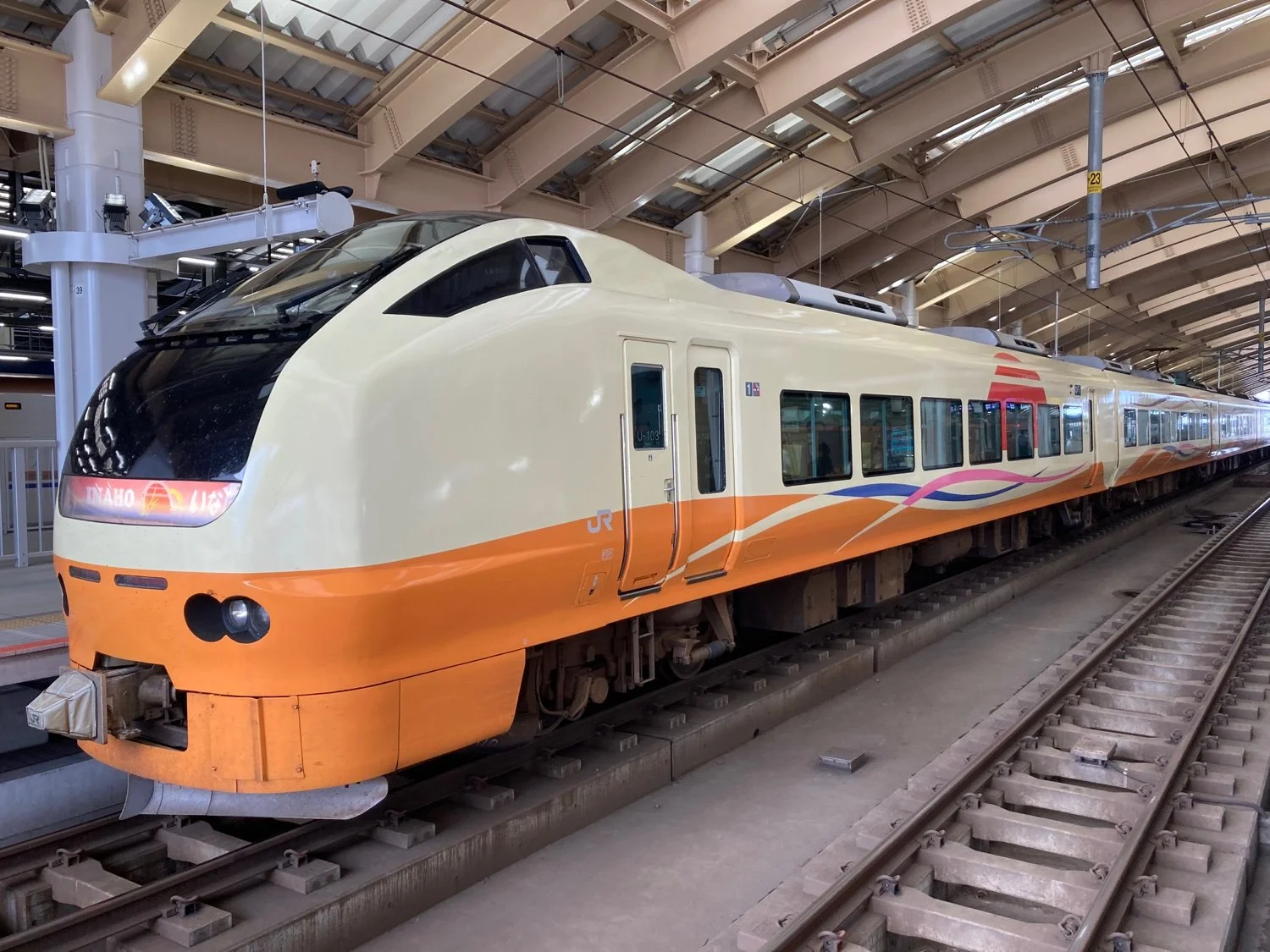
Above: An E653-1000 "Inaho" train set stopped at Niigata Station in 2021. The livery and plaque is meant to represent the sun setting over fields of rice against a view of the Sea of Japan.
The E653 was first built in 1997 for the new "Fresh Hitachi" limited express service on the Joban Line. Between 2011 and 2015, all E653 train sets were retired and replaced with E657s. The retired E653s were refurbished and repurposed for the Inaho limited express service on the Uetsu Main Line in 2013 and the Shirayuki limited express service on the Shin'etsu Line in 2015.
The Inaho fleet is eight E653-1000s. The original E653s were upgraded with wider seating, Green Cars (first class seating), and new liveries that depict the area of Japan they operate in. Starting in 2017, individual train sets were repainted with custom liveries, including a pair of trains repainted in 2023. One to resemble the original Fresh Hitachi service and another to resemble the old JNR 485 series that the E653-1000s replaced. Additionally, E653-1100 sets (also made from retired E653s) were added to the service in 2022.
Picture taken by me in 2021, part of my Rolling Stock series of posts.
Previous posts:
Stations
Rolling Stock
- JR East E5 Series "Hayabusa" Shinkansen
- Tobu 8000 Series
- JNR 183/189/381 Series Limited Express
- JR East 253-1000 Series Express Train
- Toei 6000 Series Streetcar
- JR E351 "Azusa" Express Liner
- JR East 185 Series Limited Express Liner
- Sotetsu 20000 Series
- JNR 9600 Class Steam Locomotive
Individual & Unique Trains
- Joyful Train "Resort Yamadori" (repurposed JNR 485 Series)
- Izukyu 2100 Series "The Black Ship Train (Kurofune)" Resort Liner
- JR East E491 "East iE" Track Inspector
- Tobu 100 Series "Spacia" Strawberry Edition
Random Photos
Train Lines
-
JNR Class EF64


no one talk about the cargo?
JNR (Japan National Railway) Class EF64 is a freight (sometime passenger) locomotive that have been serviced since 1964.
Typical freight train
sleeper express used by JR East
is this the budget version of sunrise izumo?
use on resuce/towing service
well thats EF65
And they would let a worker standing at the front when entering/exiting the deport.
-
JR East E5 Series "Hayabusa" Shinkansen (OC)

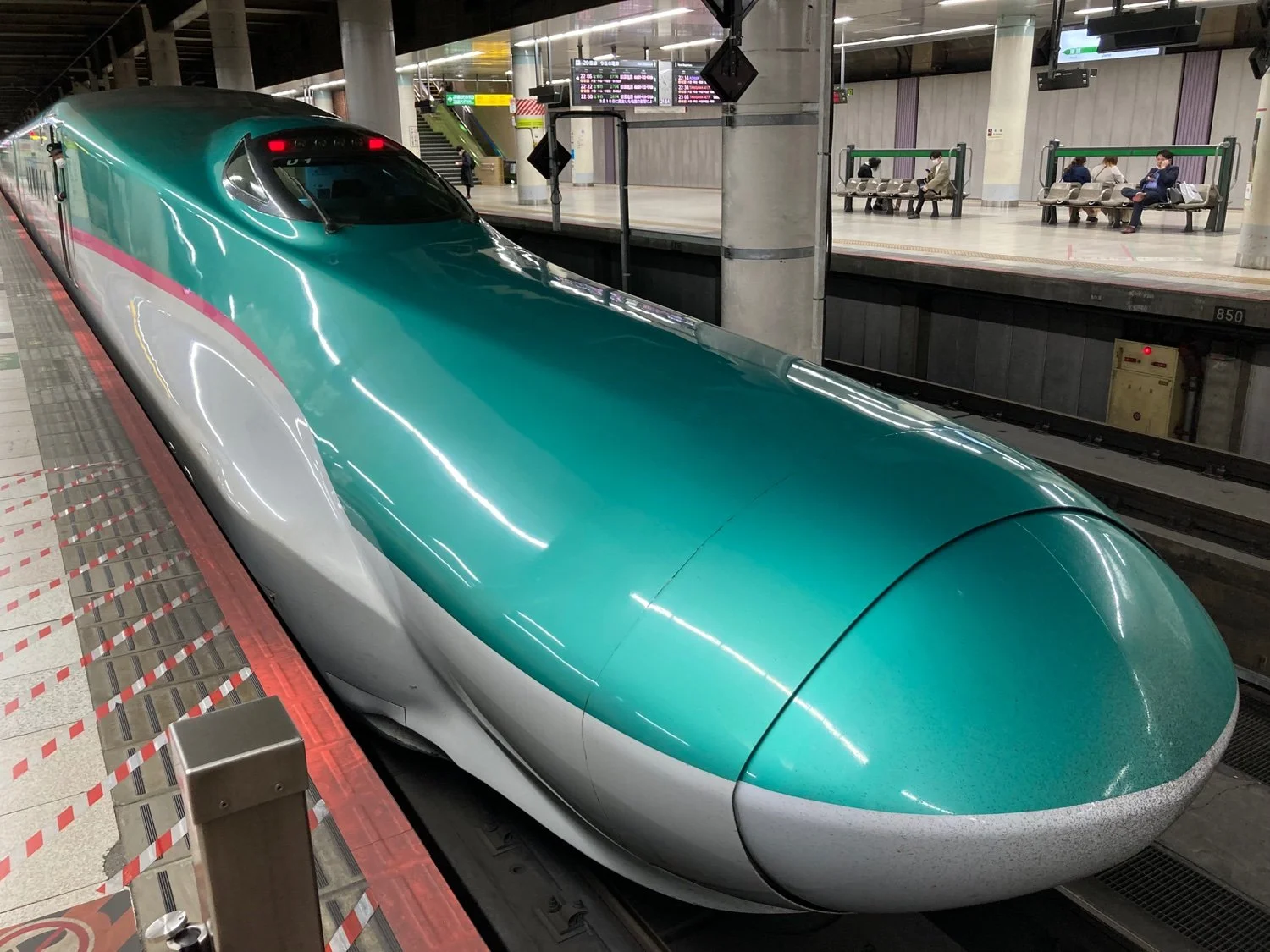
Above: An E5 Shinkansen with it's trademark aquamarine livery on the Yamabiko service at Ueno Station in 2022.
The E5 Shinkansen began life on the Tohoku & Hokkaido Shinkansen lines. It was the first new single-decker Shinkansen series since the E3s entered service in 1997. The Hokkaido Shinkansen uses an altered, nearly-identical model called the H5. H5s are designed specifically for cold weather operation and were originally incompatible with E5 sets. As of 2016, both versions can interoperate. The E5 train sets run four different services (Hayabusa, Hayate, Yamabiko, & Nasuno) in east & northern Japan, but the model, in general, is nicknamed Hayabusa (The Japanese word for the peregrine falcon) after the original service between Tokyo Station and Shin-Aomori Station.
The digital display on the outside of the train denoting the service and number. This E5 is on the Yamabiko service, bound for Tokyo Station. !
The livery of the E5 series is called "Tokiwa" green & "Hiun" white. The E5 sets have a "Hayate" pink stripe separating the green and white, while the H5 sets have a "Saika" purple stripe. Each E5 & H5 train set has an abstract logo on the side of the body designed to resemble a flower. These designs and colors are meant to evoke an image of the colorful fields of flowers found in northern Japan.
The E5 Shinkansen are often seen coupled to the E6 "Komachi" Shinkansen (red) while running between Kanto and Tohoku. An E5 & E6 set at Sendai Station in 2023. !
The E5 Shinkansen won the 2012 Blue Ribbon Award, an award issued by Japan Railfan Club to train models released the previous year that are considered to be the most outstanding. It was the fourth Shinkansen model to win the award.
A mockup conductor cab car of the E5 series at the National Railway Museum in Omiya in 2024. !
All pictures taken by me in 2022, 2023, & 2024. Part of my Rolling Stock series of posts.
Previous Rolling Stock posts:
-
Rintetsu 6000 series


The Oarai Anko Matsuri (Oarai Anglerfish Festival) livery, which celebrate the anglerfish at Oarai, Ibaraki.
what does it taste?
Operation 30 year livery
well, somehow the Oarai is linked with Girl and Panzers, but I don't want to dig the history of it
anyway, The Oarai Anko Matsuri is happening on 16/11~17/11, you may want to give it a visit if you have time.
and they even have freight service despite being a pretty small private railway company
-
Tobu 8000 Series (OC)

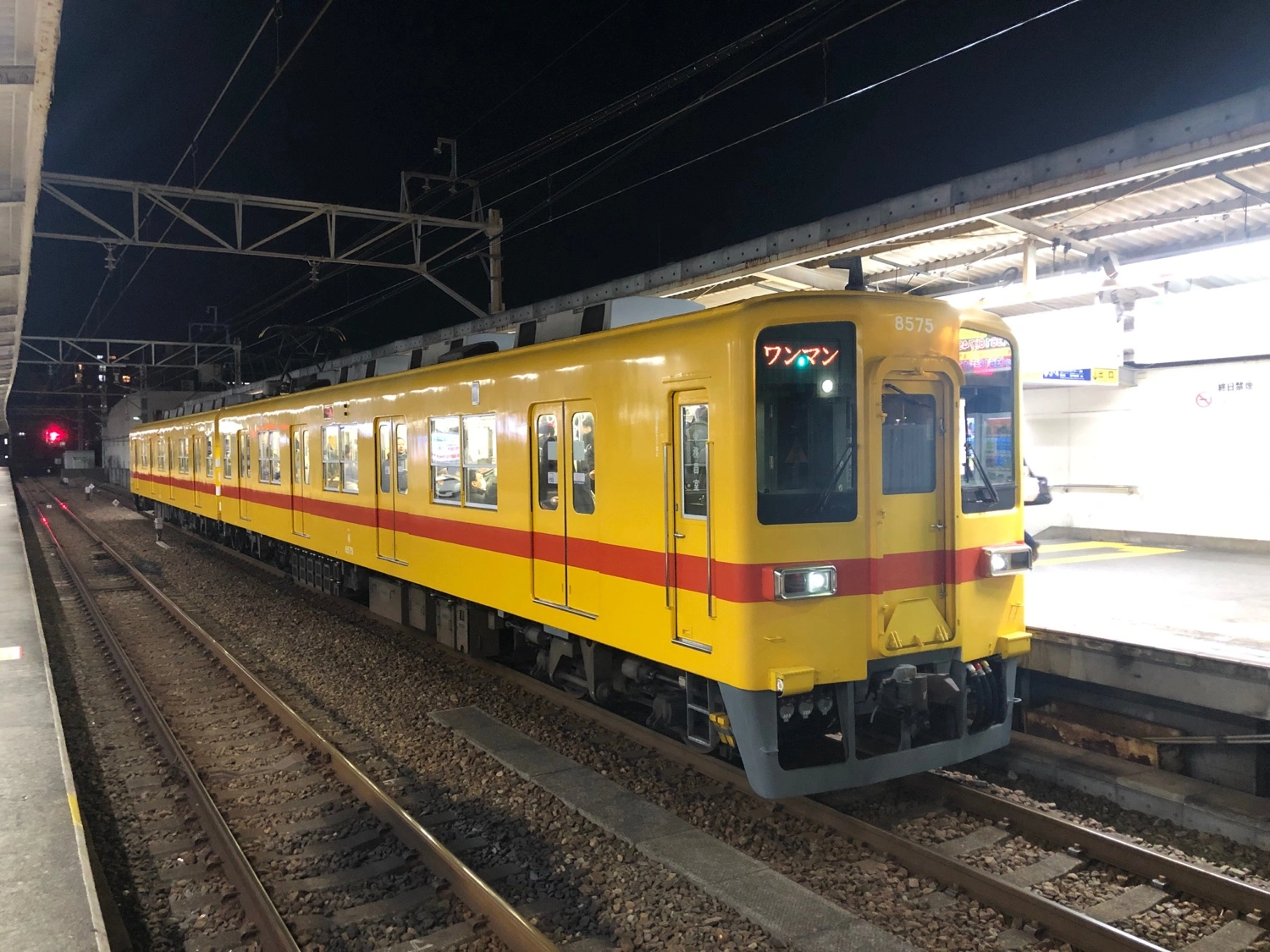
Above: The two-car "experimental yellow & orange" 8000 Series set at Hikifune Station on the Tobu Kameido Line in 2019. All 8000 Series sets operating on the Kameido Line feature the updated facades and LED lights & signboards.
The 8000 Series was introduced by Tobu Railway for service on their lines in 1963. Between 1963 and 1983, Tobu built 712 sets. Despite being a smaller train operator, this is the largest number of any single model of train ever put into operation in Japan by a private company. The 8000 Series saw service on many different lines in the northern Kanto region. From the 2000s, many 8000 Series train sets began to get replaced by never models. In 2024, over 100 sets are still in operation, and six sets have already been preserved.
At its height, the 8000 Series was either the exclusive or the primary model on 10 different lines. All ten lines continue to operate some of the remaining 8000 Series sets, with some lines operating 800 & 850 Series sets which are modified 8000 Series sets.
The green & "jasmine white" set at Hikifune Station on the Kameido Line in 2019. This livery pays homage to a 7860 Series train set given the same livery as an experiment in the 1950s.The katakana on the left signboard (ワンマン) says "wanman" or One-Man, indicating that the train is operated by a single conductor. Almost all 8000 Series train sets were eventually modified to allow for a single person to drive the train. !
Starting in 2012, Tobu began painting random 8000 Series sets with custom liveries as a way to reinvigorate interest in the trains.
One set in particular, 8111, is a fully-preserved 8000 Series set kept in running order by the Tobu Museum. It features no modifications from the original design apart from safety improvements and some LED signal lights. It was repainted multiple times over the course of 15 years before being returned to regular service on the Urban Park (Noda) Line in 2023.
Set 8111, featuring the original "royal beige" & "international orange" livery, going out of service at Kasukabe Station on the Urban Park Line before preparing to "turn around" and return to Omiya Station in 2024. ! ! !
All pictures taken by me in 2019 & 2024. Part of my Rolling Stock series of posts.
Previous Rolling Stock posts:
- Joyful Train "Resort Yamadori" (repurposed JNR 485 Series)
- JNR 183/189/381 Series Limited Express
- JR East 253-1000 Series Express Train
- Izukyu 2100 Series "The Black Ship Train (Kurofune)" Resort Liner
- Toei 6000 Series Streetcar
- JR East E491 "East iE" Track Inspector
- JR E351 "Azusa" Express Liner
- JR East 185 Series Limited Express Liner
- Sotetsu 20000 Series
- JNR 9600 Class Steam Locomotive
- Tobu 100 Series "Spacia" Strawberry Edition
-
Joyful Train "Resort Yamadori" (repurposed JNR 485 Series) (OC)

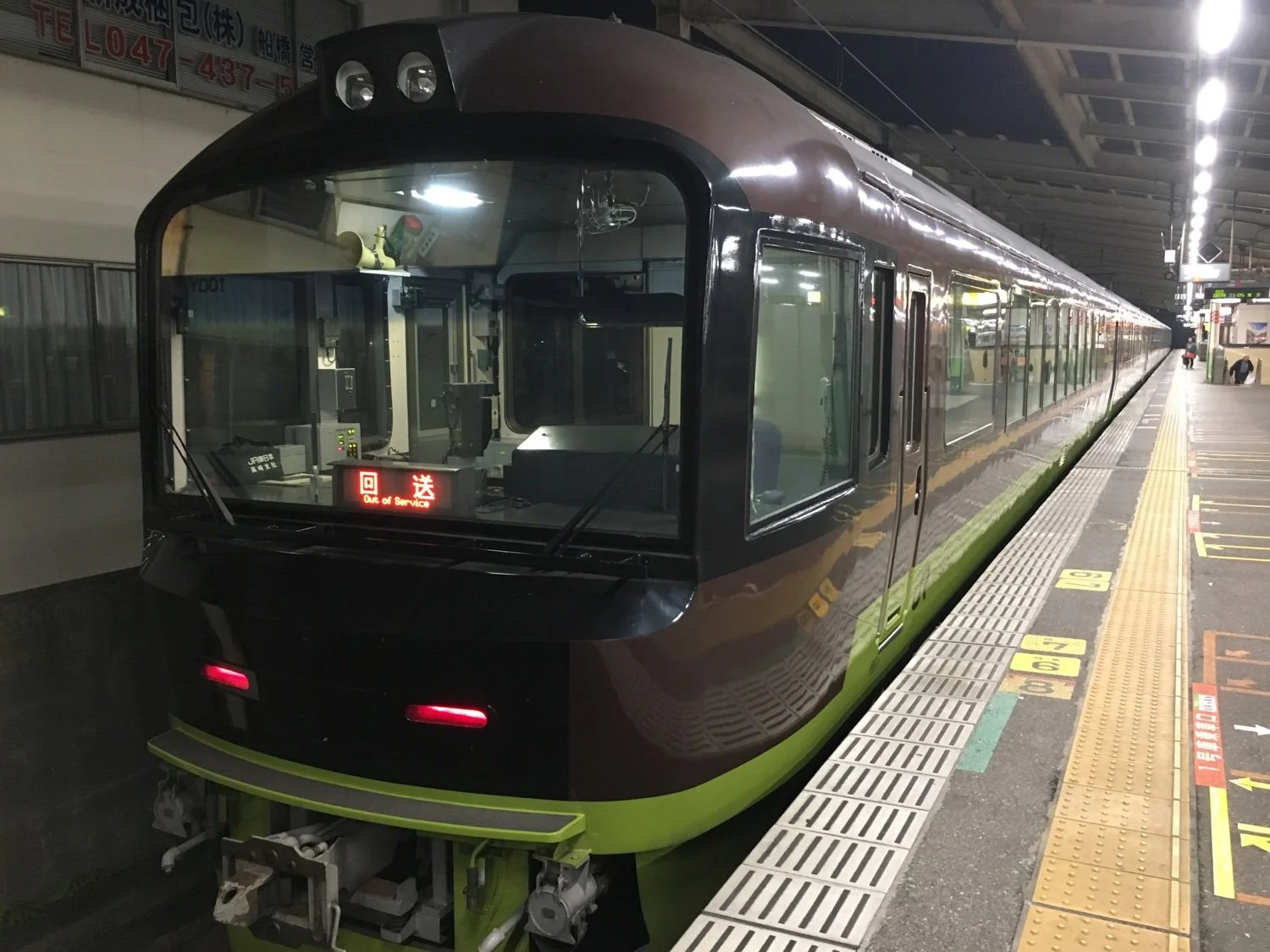
Above: Resort Yamadori sitting out of service at JR Nishi-Funabashi Station in 2016.
Resort Yamadori was a touring liner that operated out of Takasaki and served the Tokyo Metropolitan Area. It was built from a salvaged 485 Series limited express train set. It operated from 2011 to 2022, making it the last 485 Series hardware in operation in Japan.
Resort Yamadori also doubled as a rapid train on the Resort Kusatsu service until 2018.
The interior design of Resort Yamadori was meant for relaxation and healing. There was an observation deck, a kids room, a meeting room, and the floors were fitted with tatami mats. Parts of the train were also a restoration of the regular seating on the original train.
The Resort Yamadori logo on the side of the train. !
Resort Yamadori was scrapped and dismantled very shortly after being retired from service.
Pictures taken by me in 2016. Part of my Rolling Stock series of posts.
Previous Rolling Stock posts:
- JNR 183/189/381 Series Limited Express
- JR East 253-1000 Series Express Train
- Izukyu 2100 Series "The Black Ship Train (Kurofune)" Resort Liner
- Toei 6000 Series Streetcar
- JR East E491 "East iE" Track Inspector
- JR E351 "Azusa" Express Liner
- JR East 185 Series Limited Express Liner
- Sotetsu 20000 Series
- JNR 9600 Class Steam Locomotive
- Tobu 100 Series "Spacia" Strawberry Edition
-
Konan Railway Ki-104

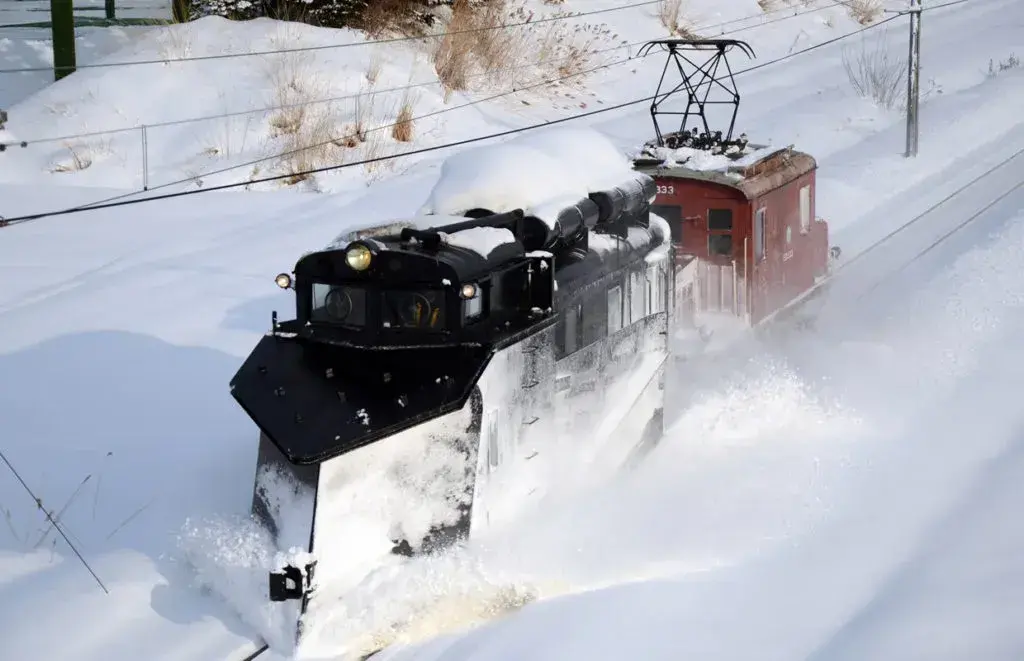
Operate at winter, the Ki-104 is used for snow removal as pushed by the ED 333 eletric locomotive.
Orgin is the Ki 100 series from the state owned period, it has been servicing for 95 years.
Don't enter the railroad
Is that the attraction of Hokkaido ?
Speaking of snow, you know something is defrosting as I write.
-
Hankyu 4050 series

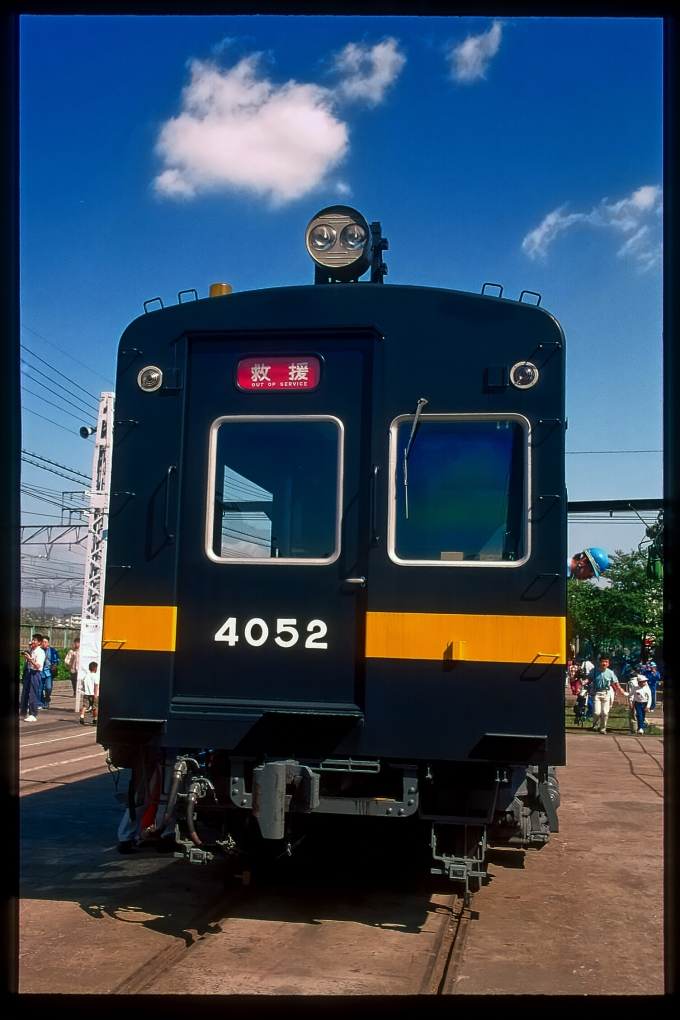
by 丹波篠山さん ,sauce
Hankyu 4050 series is a resuce locomotion introduced at 1982. The body of it is scrapped from the 920 series. about 7 days ago, the 4051 is scrapped, marking the end of 4050 series. still, it is pretty amazing for it to serve for such a long time.
????
-
Kumamoto Electric Railway 01 series

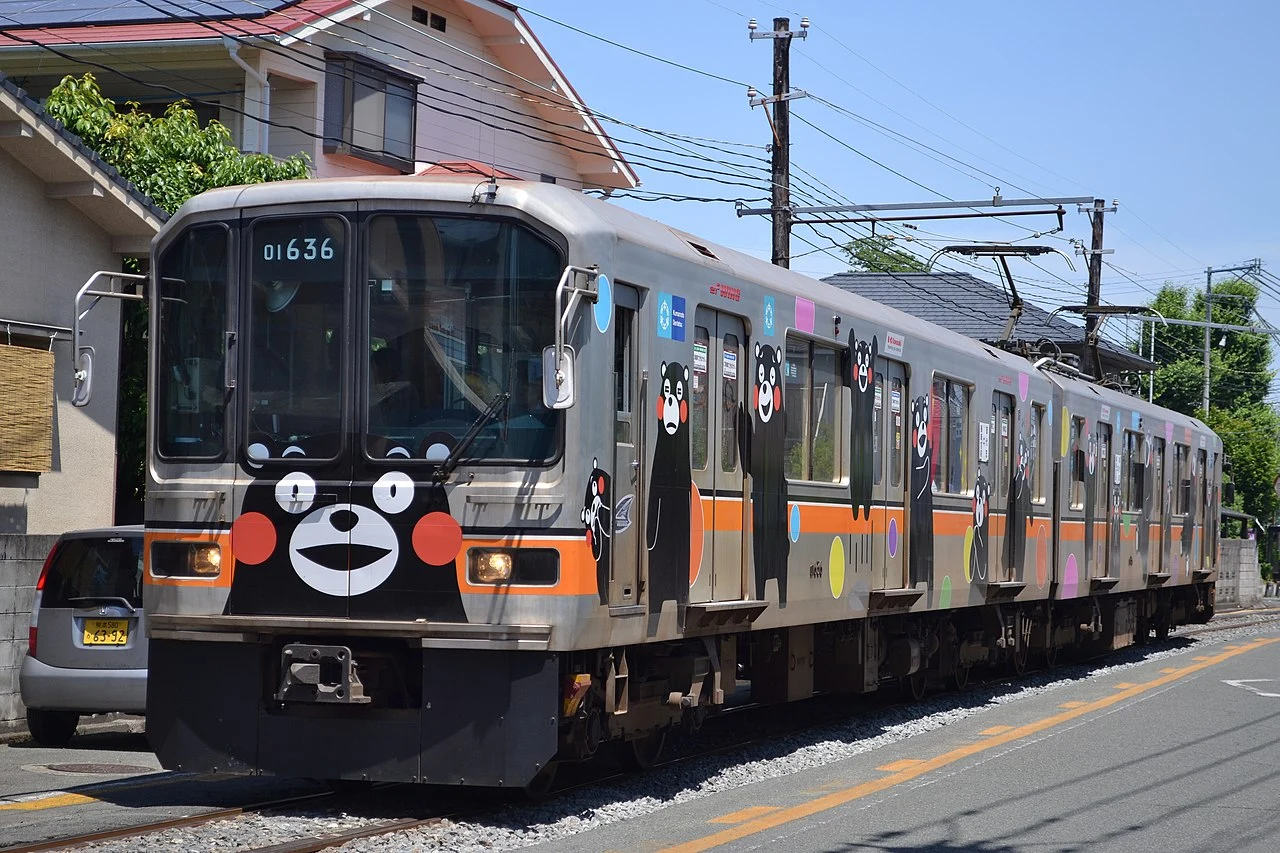
I forgot to post last week....
Anyway, this is the Kumamoto Electric Railway 01 series. Hmm... this is oddly familiar to me....
Oddly familiar to the Tokyo Metro 01 series.
As expected, Kumamoto Electric Railway bought the retired 01 series (and upgrade it).
Also, they get train running on road at Fujisaki Line. That section originally is designed for tram, and somehow train is running on it. Also, that is originally a Toei 6000 series.
Originally a Tokyo Metro 03 series.
The Kumamoto Electric Railway is a pretty local train company. Most of the section is single railed...
On the other hand, they are planning for to transfer their train system into LRT. Maybe that is a more feasible solution for budget friendly transport system?
-
JNR 183/189/381 Series Limited Express (OC)

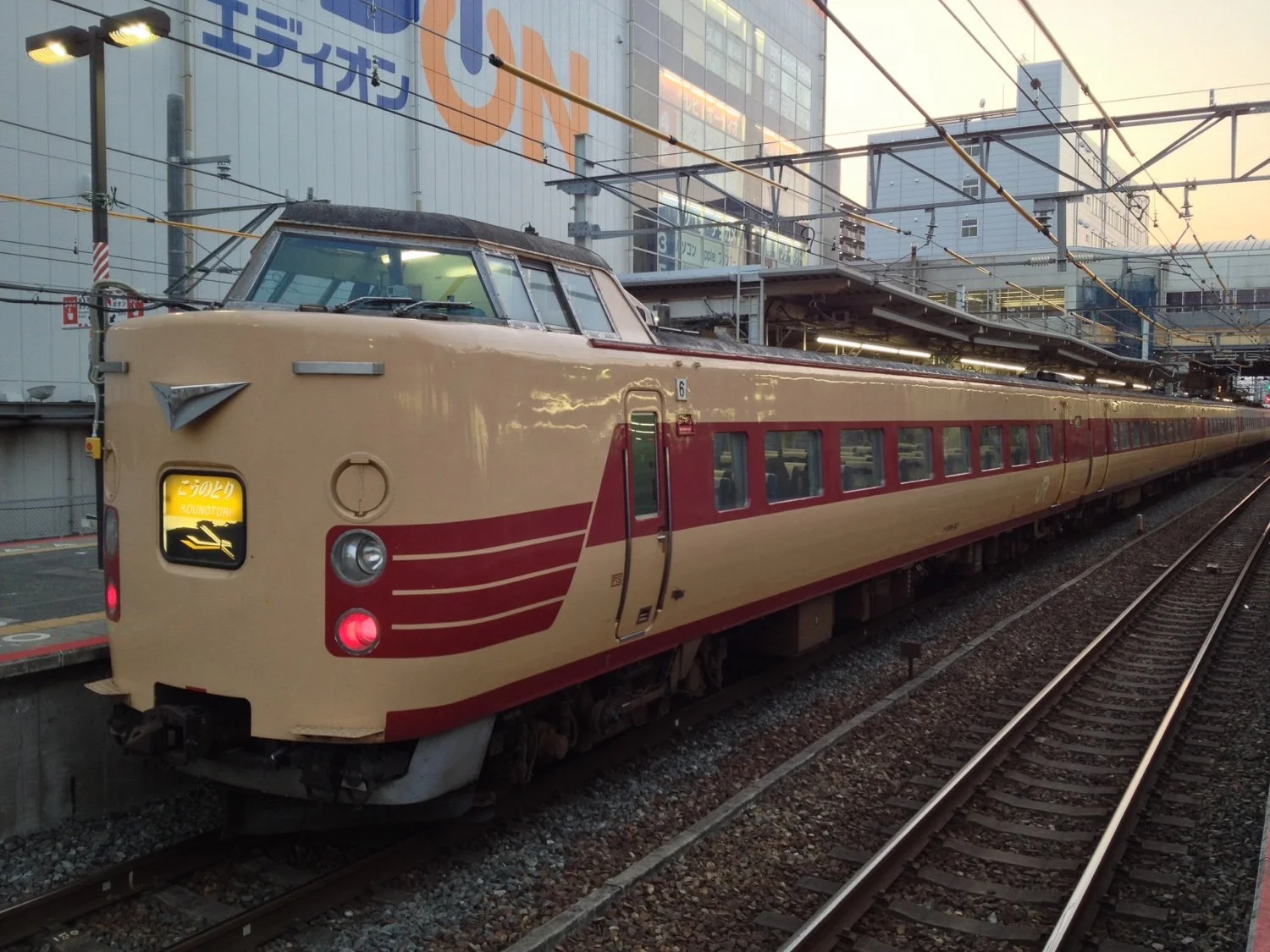
Above: A 6-car JR West 189 series train set on the Kounotori Limited Express service, parked at Amagasaki Station in 2013.
The JNR (Japan National Railway) 183 series trains were introduced in 1972. They were the direct descendants of the similarly-designed 485 series. They featured a more simplified conductor's cabin (without a protruding nose cone) and other improvements, including the ability to link their drive trains to other models for tandem locomotion. The 183s retained many distinctive stylings of the 485 series, such as the dark cream & dark red livery and the metallic hood ornaments.
In 1973, some retired 485 series chassis were refitted with 183 frames and returned to service as the (strangely-numbered) 381 series train. These trains featured tilting bogeys to allow them to take curves at higher speeds. They were visually identical to newly-built 183s with a few telltale changes to the classic livery.
From 1974, newer editions of the 183 were introduced with further improvements. A handful of sets were strengthened against snow and cold weather. These sets were originally labeled as 183-1000 & 183-1500, but would later be referred to as 189s. At some point another minor derivative of the 183 series was planned as the 187 series, but never entered production.
Following the privatization of Japan's railways, the trains were owned and operated by both JR East and JR West.
The 183 & 189 series underwent refurbishing between the 1990s and the 2000s, the 381s were refurbished during the 2000s and the 2010s.
All 183/189/381 series trains were taken out of regular service between 2011 & 2015 and replaced with newer rolling stock. The last 183 series trains were formally retired in 2019 and the last 381 series trains were formally retired in the summer of 2024. Many sets have been preserved at various museums throughout Japan.
Two preserved 183s on display at the Railway Museum near Omiya Station in Saitama in 2024. The interior seating has been restored and is open to the public for eating boxed meals inside the train anytime during museum hours. !
Pictures taken by me in 2013 and 2024. Part of my Rolling Stock series of posts.
Previous Rolling Stock posts:
- JR East 253-1000 Series Express Train
- Izukyu 2100 Series "The Black Ship Train (Kurofune)" Resort Liner
- Toei 6000 Series Streetcar
- JR East E491 "East iE" Track Inspector
- JR E351 "Azusa" Express Liner
- JR East 185 Series Limited Express Liner
- Sotetsu 20000 Series
- JNR 9600 Class Steam Locomotive
- Tobu 100 Series "Spacia" Strawberry Edition
-
JR Central "60 Years Worth Of Memories" commercial (video)
YouTube Video
Click to view this content.
JR東海「60年分の会いにいこう」
A commercial commemorating the 60th anniversary of the Shinkansen.
From YouTube (translated): Thanks to you, on October 1, 2024, the Tokaido Shinkansen celebrated its 60th anniversary. We have put 60 years of memories and gratitude into the video, along with past trains and in-car chimes, and photos and videos sent in by customers. Today and in the future, the Tokaido Shinkansen will support your "going to see" journeys.
-
Osaka Metro 400 series


Osaka Metro , as the name suggests, a metro system serving the Osaka City. The 400 series starts to service the Chuo Line since 2023.
Osaka Metro is better (in my opinion) than the JR Osaka Loop Line as the frequency is too little.
Boxy design = higher capacity?
Osaka is an industry city. The train is giving me some, industry vibing?
-
Takanawa Gateway Station (OC)

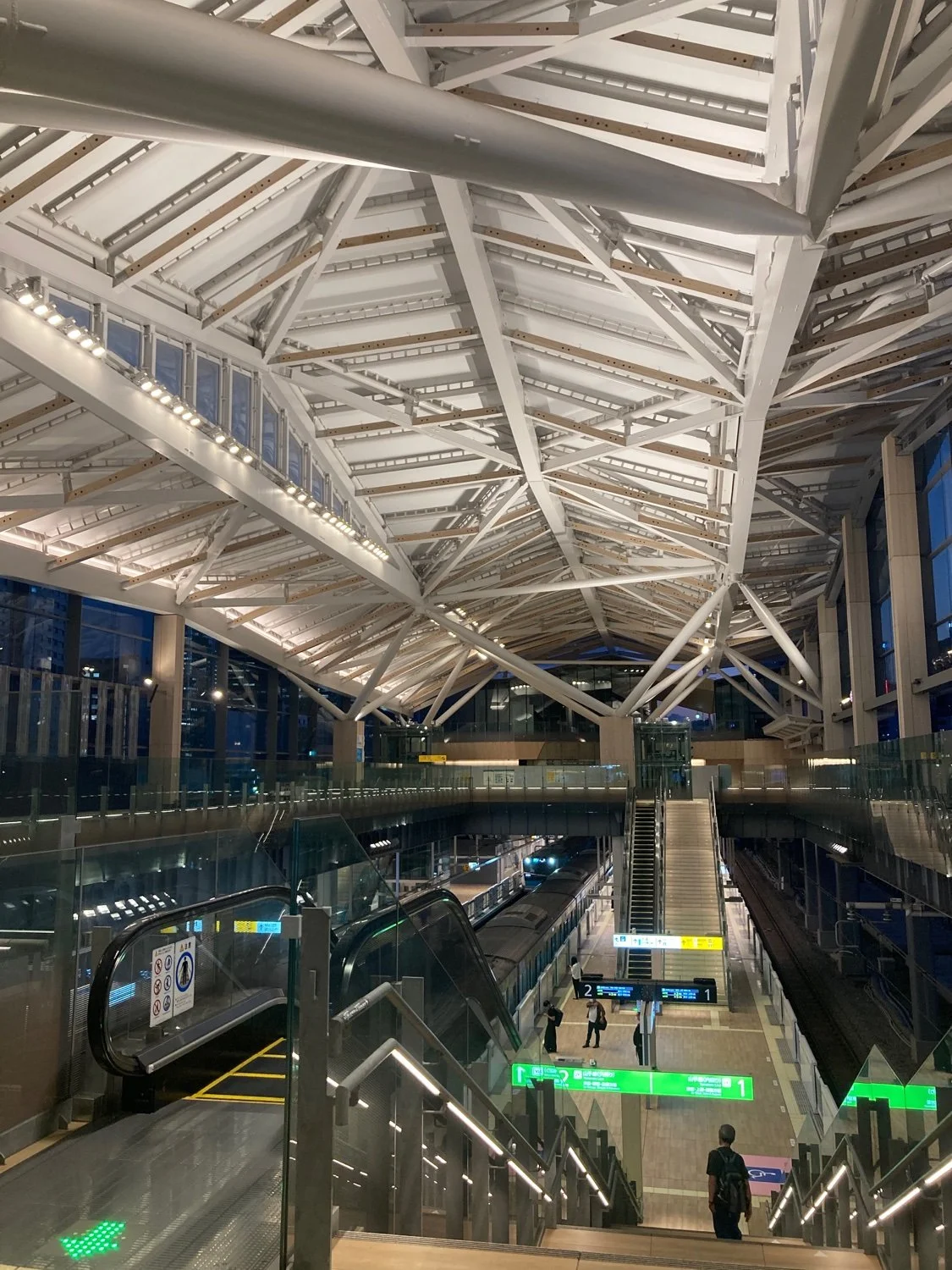
Above: On the entrance level of Takanawa Gateway Station looking across the open area above the platform level as passengers board a Yamanote Line train.
Let's try something different.
In 2014, JR East announced that they would build a new station on an area of the existing Tamachi Depot in southern Tokyo that would service the Yamanote Line and the Keihin-Tohoku Line. It was the first new station to be built on the Yamanote Line since 1971 and the first to be built on the Keihin-Tohoku Line since 2000. Takanawa Gateway Station (高輪ゲートウェイ駅) began construction in 2017 and was to be opened in advance of the 2020 Tokyo Olympics. Even though the station opened on schedule, it began service 10 days prior the 2020 Olympics being postponed to 2021 due to the worsening COVID-19 situation worldwide.
! An opposing view of tracks 1 & 2 on the platform level below. A counter-clockwise Yamanote Line train is departing (left) just as a clockwise Yamanote Line train arrives (right).
While the station opened to commuters in early 2020, facilities inside the station and adjoined buildings outside the station continued to be worked on all the way through to 2024. In 2025, the south ticket gate is scheduled to open to the public which will mark the completion of construction on the station.
! The north ticket gate of Takanawa Gateway Station. Inside and to the left, shopping and dining. Inside and to the right, access to the platform level for the two lines. Directly behind, walkway to shopping centers and condominiums that were still being constructed at the time the photo was taken.
The majority of the station is built above ground, hovering over the tracks and their platforms. The center of the station's entrance level is open to the ground below which allows most people inside the ticket gate to see the trains on all four tracks coming and going with ease. The entire station is shielded from the weather by a steel latticework roof suspended high above the entrance level. Above the entrance is a smaller level with shops and restaurants.
! If you look closely, you can see that wood has been integrated into the support beams of the roof. Takanawa Gateway Station is built in almost the same area that the Takanawa Great Wooden Gate once stood as the southern entrance to pre-Tokyo Edo. In a way, this station takes over the duty of ushering people from the south into the city, so the subtle woodwork seems to be a nod to that connection. Otherwise, the entire station is steel and glass.
Outside the station, the elevated entrance leads to additional elevated walkways that connect the station to nearby shopping centers, offices, and residential buildings. The land around the station, which was largely devoid of people, is being repurposed as dense inner-city living and commerce.
! The rest of Tamachi Depot that continues to operate as a depot. The Tokaido Shinkansen passes beside Takanawa Gateway Station between Shinagawa and Tamachi Stations. That menacing Bond villain-looking building belongs to NTT docomo (a major Japanese telecom).
The name Takanawa Gateway was chosen by JR after holding a public poll in 2018 asking the people of Japan was the station should be called. The results of that poll showed the names Takanawa, Shibaura, and Shibahama winning the most votes. However, JR unilaterally chose the name Takanawa Gateway despite it being towards the bottom of the list of contenders. This caused public criticism over why the vote was held in the first place and an attempt to petition JR to use one of the winning names instead. JR did not alter their decision, defending their choice as a name that best reflected the future development of the area (Takanawa as the area, and Gateway as a "Gateway to Edo" referencing the Takanawa Great Wooden Gate which was the old southern entrance to the city of Edo).
! A giant video wall on the far end of the entrance level. It plays a looping presentation of the history of this area of Tokyo, as well as the history of local rail transport. Additionally it shows the local weather and other information.
Considering this station is relatively small and only serves two lines with no connections (not even to very close by Sengakuji Station on the Toei Asakusa Line), it is unusually stylized and very expensive (the cost to build the station is unknown). Its high quality nature makes sense as the surrounding area is being completely redeveloped to bring in new residents and tourists to the tune of 500 billion yen. Useful if you live or work here, but most people are just going to see it from inside the train car while on their way to Shinagawa or Tokyo.
All pictures taken by me in 2020. Part of my Stations series of posts.
-
Two Rapid Trains Meet On The Keisei Main Line (OC)


Above: A Toei 5500 series Rapid service train (left), inbound for Keisei-Asakusa Station meets a Keisei 3700 series Rapid service train (right), outbound for Keisei-Sakura Station @ Keisei-Funabashi Station on the Keisei Main Line in 2023.
...Keisei. :)
Picture taken by me, part of my Random Photos series of posts.
Previous Random Photo posts:
-
(Trolleybus) Kurobe Kanko 8000 series

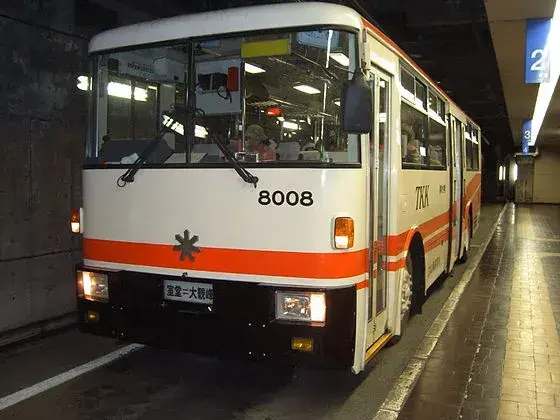
Train or bus?
Hmm.... Signal System?
Galaxy Railway 999 Departure Melody which is also used by Sanyo Shinkansen?! [Source]
IMPORTANT MESSAGE: Final operation date on 11/30 (mm/dd)
The last trolleybus system in Japan. Operated since 1996, it remained an important transport access in Tateyama Kurobe Alpine Route (Mountain route).
However, due to difficulty of transporting parts, it will be replaced by electric bus in the future.
Farewell Tateyama Tunnel Trolleybus, the world last right-hand driving trolleybus.
Route map: Murodo - Daikanbo
Side note: In Japan, trolleybus is considered as railway. And the Murodo station is the highest railway station in Japan.
Sidenote2: Tateyama Kurobe Alpine Route consists 5 different type of transportation (including trolleybus)
-
JR East 253-1000 Series Express Train (OC)


Above: OM-N02, one of two 253-1000 series train sets, parked on standby at Shin-Tochigi Station on the Tobu Nikko Line in 2024.
The JR East 253 series of express trains were constructed in 1991, and are best known for their service as the Narita Express between 1991 and 2010. From 2009, all 253s were gradually replaced with E259s. Two of the retired 253s were refurbished as the 253-1000 series, repainted, and moved to the Tobu Nikko and Kinugawa lines to serve as Limited Express liners from 2011 to the present day.
!OM-N02 speeding towards Tokyo, just outside of Shin-Tochigi Station. OM-N02 speeding towards Tokyo, just outside of Shin-Tochigi Station.
The two trains are a rare sight to see in motion. They run from Shinjuku Station to Tobu-Nikko Station and Kinugawa-Onsen Station, respectively. They were refurbished to have more passenger seating and more windows per car. The Green Cars, which served as business class seating on the Narita Express, were converted to regular seating. While the trains used to have a bright red and white livery, they now have a moodier color scheme with darker reds and other colors that represent the shrines and flora along those two lines. The trains still retain the unique air horn siren that is ubiquitous on the Narita Express (sound on):
!A 253-1000 passing through Kassemba Station on its way to Tochigi Station. A 253-1000 passing through Kassemba Station on its way to Tochigi Station.
The 253-1000s replaced the older 189 series & 485 series trains that had been running the Limited Express service on those lines (more about those bad boys another time). The Tobu 100 series "Spacia" trains are now the only other model on those lines. Although the 253-1000s began service in June 2011, they were suppose to start running earlier in the year. Their inaugural runs were postponed due to power outages caused by the Tohoku Earthquake. The 485s continued to operate on a reduced schedule until full power could be restored to the lines.
All media taken by me in 2024. Part of my Rolling Stock series of posts.
Previous Rolling Stock posts:
-
Oigawa Railway Steam Locomotive


SL stands for steam locomotive. This big boy is made in about 1930....
Retro cab
This is somewhat familiar....
It's you Thomas ! What are you doing in my post? I know you are part of the Oigawa Railway...Go away!
"But I am a steam locomotive"
Anyway, in 2022, part of the main line is damaged due to tycoon.
But they still manage to continue the operation, which is good👍
And they also have a few interesting EL.
Quite good
Is that..... Japan?
Due to federation problem,my previous post become ani.social exclusive content.
and it reminds me that my fubuki post which I post in here by mistake still isn't deleted
-
Izukyu 2100 Series "The Black Ship Train (Kurofune)" Resort Liner (OC)

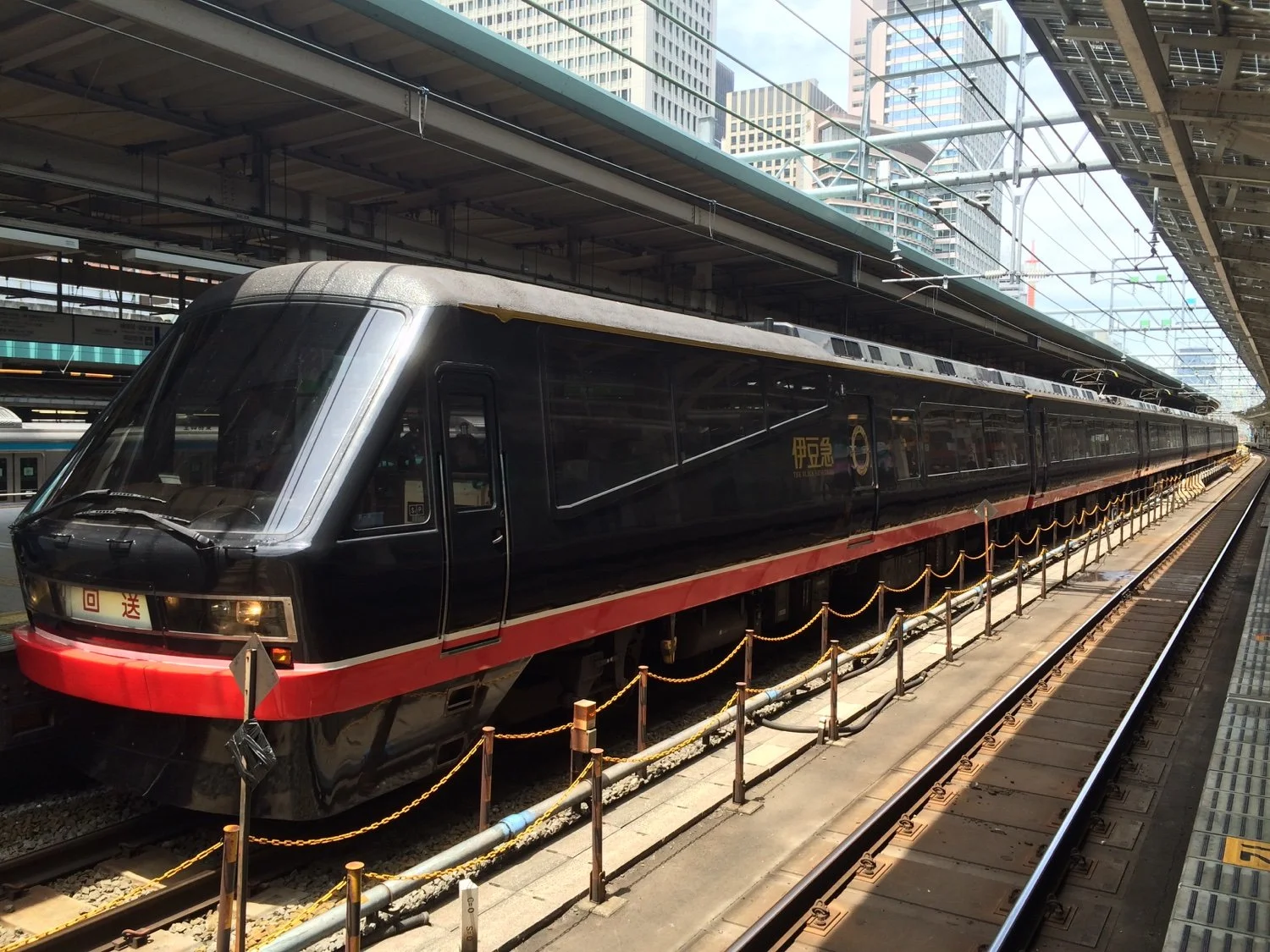
Above: The Izukyu 2100 series R-4 "The Black Ship Train" or "Kurofune", in a rare public appearance at Tokyo Station in 2015.
The Izukyu 2100 series, also known as the "Resort 21" resort liners, were purpose built to reinvigorate tourism in Shizuoka. All 2100 series sets run on the Izu Kyoku Line. Each train features a different theme, some which feature elaborate interiors.
The Black Ship Train was first introduced in 2004, on the 150th anniversary of the opening of Shimoda port in Shimoda City, Shizuoka. The train was themed around the Japanese perception of Western sailing ships of that time. The first 2100 series to be themed as The Black Ship Train was the R-1. In 2006, R-1 was retired from service and R-4 was rethemed The Black Ship Train as its successor. R-4 is in active service to this day.
Pictures taken by me in 2015. Part of my Rolling Stock series of posts.
Previous Rolling Stock posts:
-
Hiroshima Dentetsu 650 series

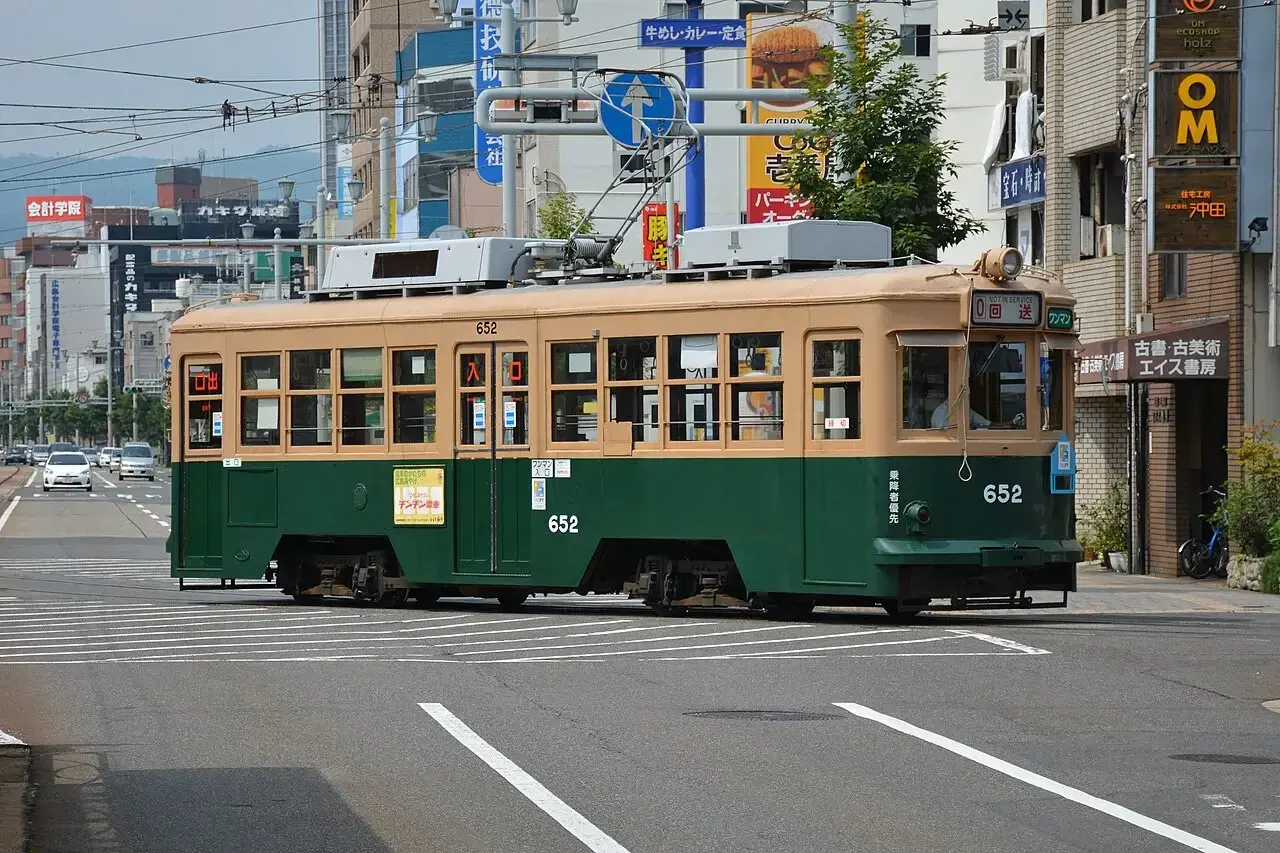
The tram that survive nuclear explosion, a symbol for rebirth of the city.
After the drop of "Big Boy", most of the tram is damaged (or vanished), but there are still four of them managed to survive.
With a speed limite of 35 km/h, it is considered too slow and retired in 2006. But fortunately, 2 of them would operate during peak hours. For now, on the day when the bomb is dropped, at 8:15, they will stop at Hiroshima Peace Memorial.
As a closing note, when tram stops at the Memorial, the announcement will be made with a special bell.
-
Toei 6000 Series Streetcar (OC)

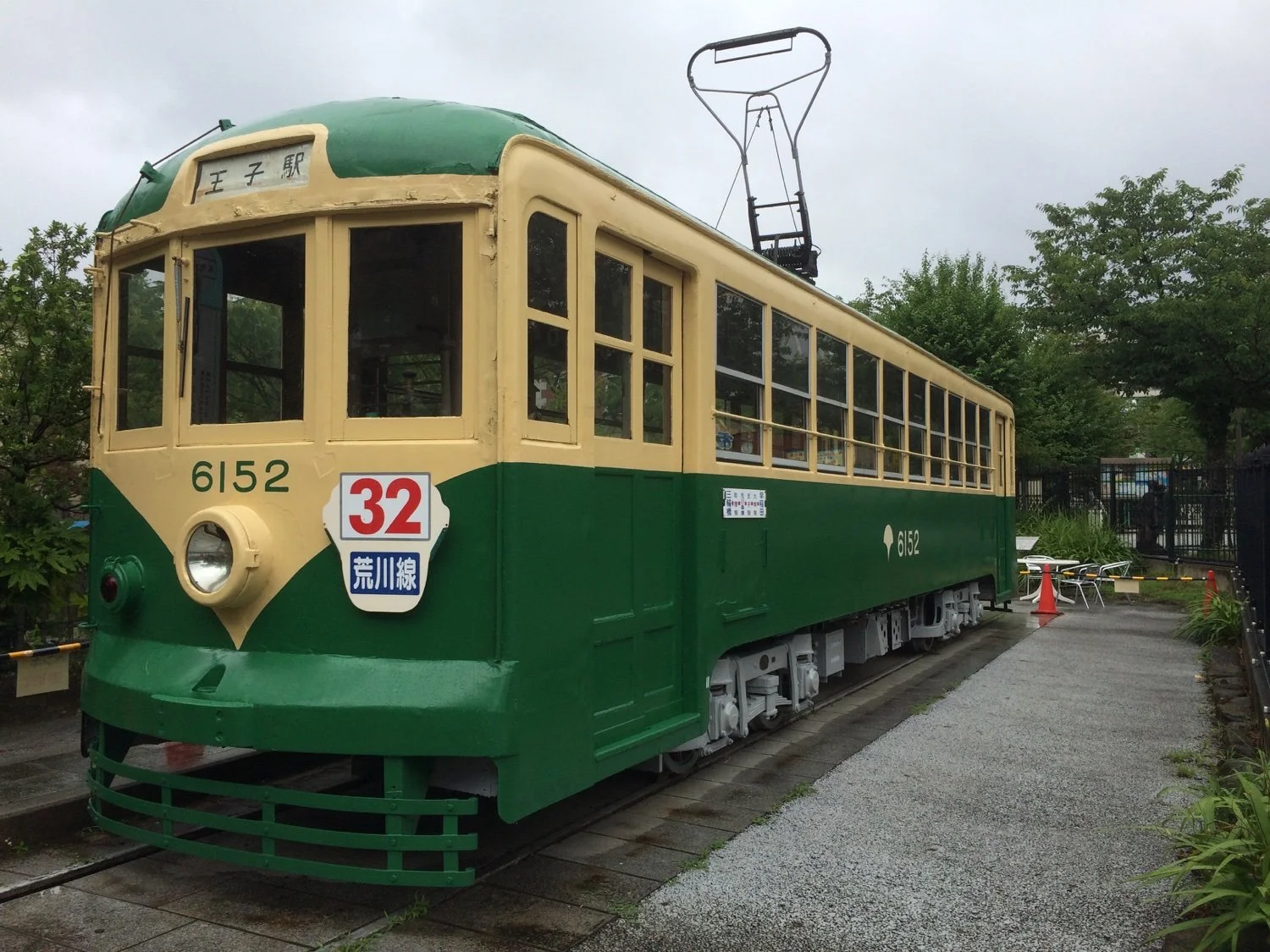
Above: Toei 6000 series streetcar No. 6152, nicknamed Ichikyu-san (193 or One-eye), being displayed in a preserved state at Arakawa Amusement Park in 2015.
This is not a random car that was chosen to be displayed instead of scrapped, 6152 is something of a celebrity in Tokyo.
The 6000 series was built between 1947 and 1952. These streetcars were among the first new trains built by Japan after World War II. They were used on tram lines throughout Tokyo, primarily replacing pre-war 3000 series streetcars that were either lost to bombings or overworked until they literally fell apart. The few remaining 3000 series streetcars that still ran were refurbished to resemble the 6000 series and kept in service until repairs became impractical.
Almost 300 of the 6000 series were produced and, by 1970, they represented the bulk of Tokyo's commercial streetcars in operation. However, it was in the 1970s that tram lines across the entire city were suddenly abolished. All tram lines were shutdown except for the Arakawa Line in northern Tokyo. Shortly after the shift away from streetcars, the entire 6000 series fleet was pulled from service and scrapped.
...With the exception of 13 cars. These cars were sent to the Arakawa City Depot for storage. One car (6152) was kept in service as a temporary vehicle that could be put on the line when needed. This is how "Ichikyu-san" started its journey.
Ichikyu-san was immediately refurbished with newer parts cannibalized from more-recent 6000 series cars that had been dismantled in anticipation of being put back into limited service. However, Ichikyu-san remained in depot. It became a glorified tool shed for the workers there. But in 1986 it was refurbished again with new safety and electronic equipment and put back into full-time service on the Arakawa Line.
In 1988 its power system and doors were updated and it was repainted in the original deep green and pale yellow livery it began life with (as seen in the photo) and was used for special events.
In 1993, Ichikyu-san was removed from service. Its condition had deteriorated and was given an emergency inspection, repainted in a lighter shade of green, refurbished once again, and sent back into service.
In 1994, additional upgrades were made to the car, including giving it a radio with the callsign "ninety-three". This is when car 6152 got its nickname "Ichikyu-san". Kyu-san for its callsign and Ichi for its singular headlight. Literally, it translated to 193, but also means One-eye (Cyclops). The train became a favorite among those that frequented the Arakawa Line.
In December 2000 and just six months later in June 2001, Ichikyu-san was involved in two separate collisions with trains on neighboring lines. Both accidents could be traced to the fact that the aging 6000 series streetcar had only one brake and no redundancy system when it could not slow the car fast enough. Additional refurbishments which would now require a new braking system became financially impractical. In December 2001, 6152 was formally retired from service.
Due to the unusual popularity that particular car had with the people of Tokyo, public calls for the preservation of Ichikyu-san were answered. Instead of being dismantled, 6152 was scheduled for preservation to the tune of 50 million yen, 20 million yen more than it would have cost to refurbish it so it could continue operating. Because of this, 6152 sat untouched for years as it was put towards the bottom of a list of other trains scheduled for preservation. A public call for support was placed on the internet, and in 2003, Ichikyu-san was put on display at Arakawa Amusement Park.
In 2007, the train received extensive repair as it had been rotting in place with no real work done to it since the 1990s. This repair work included restoring the original dark green and pale yellow livery that it was given back in the 1950s. It continued to sit exposed to the elements until 2022. After the entire park has been temporarily closed for remodeling, Ichikyu-san was completely renovated and reintroduced as a restaurant called Cafe 193. It now sits under a canopy and its interior is open to the public for the first time in over 20 years.
Today, only six other 6000 series streetcars remain, most are on public display in different areas around Tokyo, and with different liveries. But none of them are as long-served or as loved as Ichikyu-san.
Picture taken by me in 2015. Part of my Rolling Stock series of posts.
Previous Rolling Stock posts: